Best Olive Oil of 2021
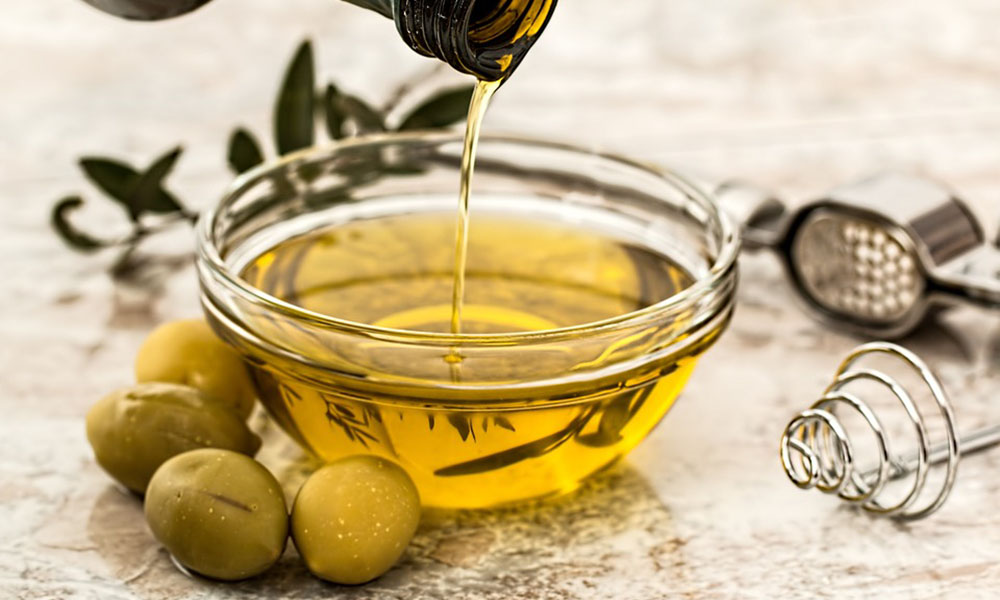
Back in the day most Americans were raised on vegetable oil. And it’s easy to understand why. Vegetable oils were cheap, readily available and some of them even tasted okay. But in the 1980s American tastes in just about everything began taking on a more global character. And just as we began to replace corn flakes, instant coffee and white bread with muesli, espresso machines and croissants we also began to replace that Mazola corn oil with olive oil.
Today, olive oil is considered the only kind of oil to use if you want to get the most from your culinary efforts. And it’s also been shown to provide a host of health benefits. Below we present the 10 best olive oils on the market today.
1. Tenuta Di Capezzana Extra Virgin Olive Oil
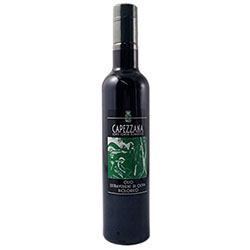
This is a blended extra virgin olive oil from Tuscany that draws upon four renowned olive types: leccino, moraiolo, frantoio and pendolino. Tenuta Di Capezzana oil features a well balanced aroma that suggests fresh cut grass and artichokes. The taste is modest with slightly bitter overtones. But essentially it’s very clean and fresh.
There are more than a few experts who hold the steadfast belief that Tuscan olive oil is the best in the world. And who are we to argue with them? With its agreeable balance of the fruity and the bitter along with its earthy bouquet it brings your grilled meats to life. Perfect for use in the outdoor kitchen or on the deck during those big weekend get togethers.
2. Colavita Premium Italian Extra Virgin Olive Oil
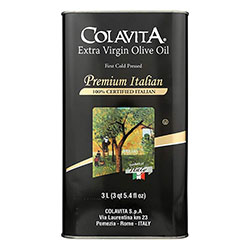
A lot of people cut their olive oil teeth on Colavita products and that’s certainly a no-lose strategy. Their Premium Italian Extra Virgin Olive Oil tin is a classic oil in a classic dispenser at a price that won’t force you to decide between olive oil and paying the rent. This classic blended oil is guaranteed 100% Italian.
Meaning it’s made in Italy using only Italian grown olives. It has a slightly fruity aroma with a flavor that’s both spicy and a touch bitter. A great finishing oil on salads, seafood and meats. Also great for roasted vegetables and when paired with certain types of hard cheese. If you’re looking for a reliably tasty, affordable and versatile olive oil to hold down the center of your table you won’t find many better.
3. Nunez De Prado Extra Virgin Olive Oil Tin
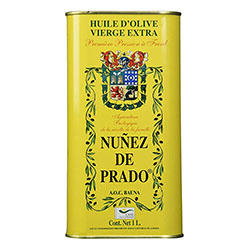
The Nunez de Prado family has been producing high quality olive oil on their estate in Andalusian Spain for more than 200 years. Their operation is small, sustainable farming techniques are the order of the day and each and every olive is harvested by hand. Nunez De Prado Extra Virgin Olive Oil provides clear citrus and minty notes complemented by delicate whiffs of butter and almond. It’s strongly recommended for both marinades and roasted meats.
What you won’t find here is the excessively nutty flavor that makes some extra virgin olive oils a poor choice for pasta. As such Nunez De Prado is the perfect oil for your Italian dishes. This is a remarkably affordable estate oil of unquestioned quality that also happens to be certified 100% organic.
4. Oleoestepa Hojiblanca Premium Quality Extra Virgin Olive Oil
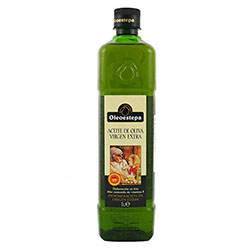
When it comes to olives there are hundreds of varietals within the species and Hojiblanca is a particularly celebrated one from the Estepa region of Spain. It has an enchanting aroma that hints at both apples and freshly cut grass and a moderately robust flavor with spicy notes and a bitter undertone.
This particular olive oil is best paired with salads, raw veggies, pasta, broiled and grilled fish and even legumes. Its robust quality is characteristic of Hojiblanca olives harvested and processed while still unripe. All in all it’s a versatile oil that will also do a commendable job searing choice meats or coating your kebabs to produce a delightful crispy shell.
5. Gaea Fresh Greek Extra Virgin Olive Oil
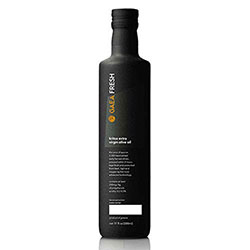
While Italian and Spanish olive oils tend to get all the press no one should underestimate Greek olive oil. Gaea Fresh Greek Extra Virgin Olive Oil is great for cooking or finishing. Gaea puts the harvest date right on the label so there’s no doubt about freshness. And the oil is considered good for up to 2 years from that date.
The olives used in Gaea Extra Virgin are harvested by hand while unripe and the oil is pressed within 3 hours of harvesting. This is an estate olive oil in case you had any doubt and each bottle is numbered. Because it’s pressed from unripened olives it has an insistent personality that makes it a good choice for meats and fish. And because its nutty quality is effectively muted you can use it with your favorite pasta dishes as well.
6. O-Med Arbequina Extra Virgin Olive Oil
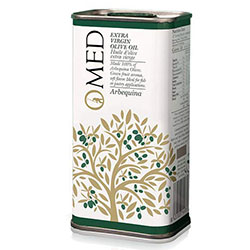
O-Med Arbequina Extra Virgin Olive Oil is, as you might have guessed, gleaned from the Arbequina olive. A highly aromatic dark brown olive cultivated mostly in Catalonia. The oil possesses a fruity quality with hints of green banana and green apple present, alongside a slightly nutty green almond. It’s touted for its versatility and is often found adorning salads and mild fish dishes while also finding its way into myriad baked goods. The nuttiness makes it not such an ideal choice for pasta.
But its low in acidity, never overly spicy and has a delicate finish sensitive palates will appreciate. This is not an inexpensive oil. And while we absolutely believe it’s worth the stretch you still might want to put some thought into how you deploy it. And have something else on hand for mundane tasks.
7. Vicopisano Organic Extra Virgin Olive Oil
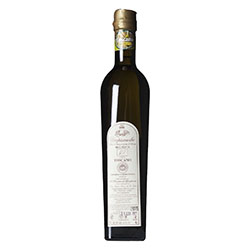
With Vicopisano Organic Extra Virgin Olive Oil we return to the hillsides of Tuscano. This is an estate olive oil produced by Il Frantoio Farm on the outskirts of Pisa. The olives are harvested by hand and cold pressed within hours preserving the fresh, fruity quality and pleasant odor. There are hints of herbs, bitter greens and nuts, particularly almonds. But that nuttiness is never in your face.
So using this with your favorite pasta dishes is always a good idea. There’s a somewhat spicy finish but it doesn’t linger to become an overwrought encore. The IGP and EU certs guarantee integrity and quality and the high level of antioxidants deliver unparalleled health benefits. Is it expensive? It certainly is. It is worth it? If you love good food it certainly is.
8. Zoe Extra Virgin Olive Oil

Zoe Extra Virgin Olive Oil provides as unique balance of aromas, including butter, fresh basil, almond, artichoke and more swathed in a fruity embrace. This is everyday Spanish olive oil at its best with picual, hojiblanca and cornicabra olives all joining in the fun. It’s great for basting, sauteing, marinades or for pairing with balsamic vinegar to make a peerless vinaigrette.
Purists may scoff at the blended nature of this oil but we applaud its versatility, its subtle integrity and its smooth, easy to enjoy full-bodied flavor with its slightly peppery kick. A great olive oil for dipping your favorite bread, adorning your salad or adding aromatic lustre to your pasta dishes. No cholesterol, no sodium, no carbs, just all delicious.
9. Papa Vince Olive Oil Extra Virgin
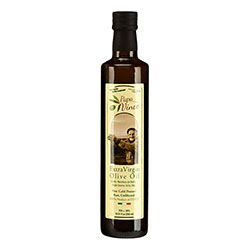
Papa Vince is no longer with us but the olive oil he fathered lives on. This is an outstanding example of Sicilian estate olive oil with the olives grown, hand picked and pressed on the same farm in the same manner for more than 80 years.
It’s light with oh-so-subtle hints of tomato and pepper. While the olives are grown using organic, sustainable methods without pesticides, insecticides or herbicides. This is a great finishing oil for your garden fresh veggies, mild fish and choice meats. And its subdued nutty characteristics open the door to pasta nirvana.
10. Monini Extra Virgin Olive Oil
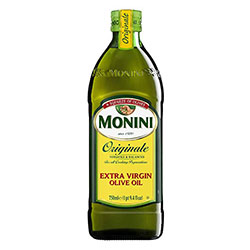
The final olive oil on our list is Monini Extra Virgin. This is a great everyday cooking oil that holds its own as a finishing oil as well. The flavor is basically fruity with some subtle grassy overtones. It’s medium bodied and won’t overwhelm salads or get lost on your roasts. It’s light aroma and impeccable balance make it ideal for sauces, marinades, sautes and kebabs. And its attractive price point makes it a no-brainer go-to oil for the whole family.
–
FAQs
What is Meant By “Extra Virgin”?
Without delving too far into the definition of “virgin” it’s still a legit question to ask just how something can be “extra” virgin. Actually the term has nothing to do with virginity as most people understand it and everything to do with the conditions in play while the olive oil is being processed. It essentially means three things:
- That the oil is extracted using the cold press method. This prevents a loss of flavor that can occur if heat is introduced into the process.
- That the oil has not undergone multiple levels of refinement. That it is essentially exactly what was extracted from the olive. No more, no less.
- And that no chemicals were used during the processing of the olive.
The upshot of all this is that the oil is considered extremely “pure”. In fact, it’s “extra pure”. And since the word “virgin” is often interpreted to denote a certain kind of purity you could say the oil is “extra virgin”.
What Are The Benefits of High Quality Olive Oil?
The benefits of olive oil are many and varied and can be enjoyed by anyone at any stage of life. Those benefits are as follows:
- Olive oil lowers your risk of heart disease – This is the most celebrated benefit of olive oil so we might as well lead off with it. Researchers long wondered why people in Mediterranean countries had a lower incidence of heart disease than those in Northern Europe. Years of study led to the conclusion that the Mediterranean diet, mostly centered around olive oil, was largely responsible (1). Olive oil was shown to reduce “bad” cholesterol, prevent excessive blood clotting and protect the integrity of blood vessels. There is also evidence that olive oil helps to reduce blood pressure (2).
- Olive oil is rich in antioxidants – Antioxidants are your cell’s best friends. They work round the clock protecting cells from the scourge of oxidative stress brought on by free radicals (3). By helping to protect the integrity of your cells antioxidants help reduce the risk of chronic disease. They’re also on the front lines of the battle against inflammation and also help protect good cholesterol in your blood from oxidation.
- Olive oil may lower the risk of Type II diabetes – Olive oil also appears to play a significant role in reducing the chances a person will develop Type II diabetes (4). The effect seems most pronounced among those who adopt the Mediterranean diet as a whole, as opposed to those who simply switch their palm oil for olive oil and continue to eat an otherwise unhealthy diet.
- Olive oil has anti-inflammatory properties – Inflammation is part of the body’s natural protective mechanism (5). It’s an immune response designed to help defend the body against viruses and other invaders. Without it infections would quickly spiral out of control and wounds would be slow to heal. Sometimes however, the immune system malfunctions and inflammation becomes chronic, endangering organs, increasing the risk of heart disease and more. Olive oil can help reduce inflammation.
- Olive oil won’t make you fat – Studies show that olive oil will not contribute to weight gain (6). Is it possible that people who consume olive oil may gain weight or even become obese? Of course. But if they do it is not the olive oil that caused the weight gain. It was any one or more of a number of other aspects of their diet and lifestyle (7).
- Olive oil may help fight off Alzheimer’s – Alzheimer’s is a devastating neurodegenerative disease characterized by the buildup of beta-amyloid plaques inside brain cells. Studies in both animals and humans have suggested that olive oil may be able to remove these plaques, at least to some degree (8). More comprehensive study is needed for sure. But the early indications are promising.
- Olive oil may help reduce the pain of rheumatoid arthritis – Rheumatoid arthritis is a vexing and painful autoimmune disease wherein the immune system attacks healthy cells by mistake. It’s not known yet what causes this extreme and seemingly irreversible dysfunction. But the anti-inflammatory properties of olive oil may help alleviate some of the worst symptoms of the disease (9).
- Olive oil may reduce the risk of cancer – Oxidative stress caused by free radicals is believed to be one potential trigger for the creation of cancer cells. Antioxidant rich olive oil can help reduce the effect of free radicals thereby reducing the risk of certain types of cancer, including breast cancer (10).
- Olive oil may help prevent stomach ulcers – One of the most important breakthroughs in medicine in recent years was the realization that stomach ulcers are often the result of bacterial infection. Helicobacter pylori is one of the bacterium responsible for ulcers and is believed to play a role in the development of stomach cancer as well. Olive oil has been shown to be effective in fighting a number of bacterial strains, including helicobacter pylori (11).
Are There Different Kinds of Olive Oil?
Olive oil is not like palm oil or sunflower oil or any of the other oils that adorn the typical American kitchen. If you were to draw an accurate analog between olive oil and something else maybe the closest parallel would be wine. All red wine is made from grapes. But not all red wine is the same. Not even close. The same could be said for olive oil. All olive oil is made from olives. But not all olive oil looks or tastes the same. Not even close. So just what is it that gives an olive oil its particular characteristics?
The Type of Olive Used
This is the most important consideration. Different olives from different parts of the world exhibit different characteristics that influence the taste. For instance, Spanish olives tend to produce a golden yellow oil with a nutty or fruity flavor. Italian olives often produce a dark green oil with a pleasant, herbal bouquet. While Greek olives tend to produce a green oil that has a robust flavor and aroma. Then there’s California olives that often result in a light colored oil with a slightly fruity taste.
Other factors that influence the look, taste and aroma of olive oil include:
- Soil conditions in the olive grove.
- Local weather conditions during the growing season.
- Whether the oil is made from a single type of olive or blended.
- The ripeness of the olive when harvested.
- How much time passed between harvesting and pressing.
- The method of harvesting.
- The packaging and storing methods used.
- And of course the pressing technique.
In much of the world olive oils are graded by taking the above factors into consideration along with the flavor and level of acidity displayed by the final product. There is actually something called the International Olive Council (IOC) that oversees quality standards. Most of the major olive oil producing countries recognize the authority of the IOC (12) and adhere to the standards it sets. Although that’s not the case in the US.
In the US olive oil standards are established and maintained by the U.S. Department of Agriculture. While this may just seem like an instance of the US thumbing its nose at the rest of the world it’s important to understand that the USDA olive oil standards were in place long before there was anything called the IOC. That said, US olive growers are keen to get everyone on the same page and so they’re petitioning the USDA to adopt the IOC standards as their own.
About Blended Oils
Estate oils are considered the creme de la creme of olive oils. These are produced from a single type of oil grown in a single olive grove on a single property. Because of this quality is typically high and uniform and the resulting oil has characteristics that cannot be duplicated. These oils are going to cost the most but many aficionados believe them worth the investment.
Often times however, you may see what looks like a very attractive oil on the shelf that’s retailing for a fraction of the price of an estate oil and wonder why the difference in price. In most cases the reduced price is a function of olives being sourced from different farms or even various parts of a particular country and then blended together. It typically costs less to produce olive oil in this way and the savings are then passed on to you. Purists don’t want to have much to do with blended oils. But the fact is there are a number of outstanding blended oils on the market today that will give estate oils a run for their money.
How Long Does Olive Oil Last?
Earlier we drew a parallel between olive oil and wine. But the parallels end when it comes to aging. While many wines develop desirable characteristics when left to age for decades or even centuries, this is not the case with olive oil. Olive oil will typically last for anywhere from a few months to a few years (13). After that it’s going to take on a rancid smell that some say resembles pet urine.
The Bottom Line
Olive oil is one of the closest things we have to a genuine “super food”. It provides a range of quantifiable health benefits, can be the missing piece of the puzzle that activates your culinary efforts and has a dizzying array of characteristics that vary from oil to oil. If you’re looking for a way to add a bit of life to your mundane meals consider any (or all) of the olive oils profiled above.


0 Comments